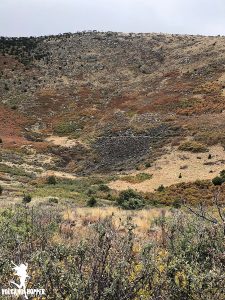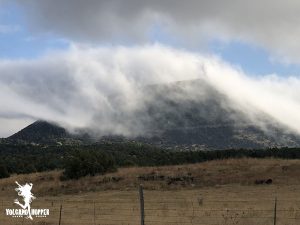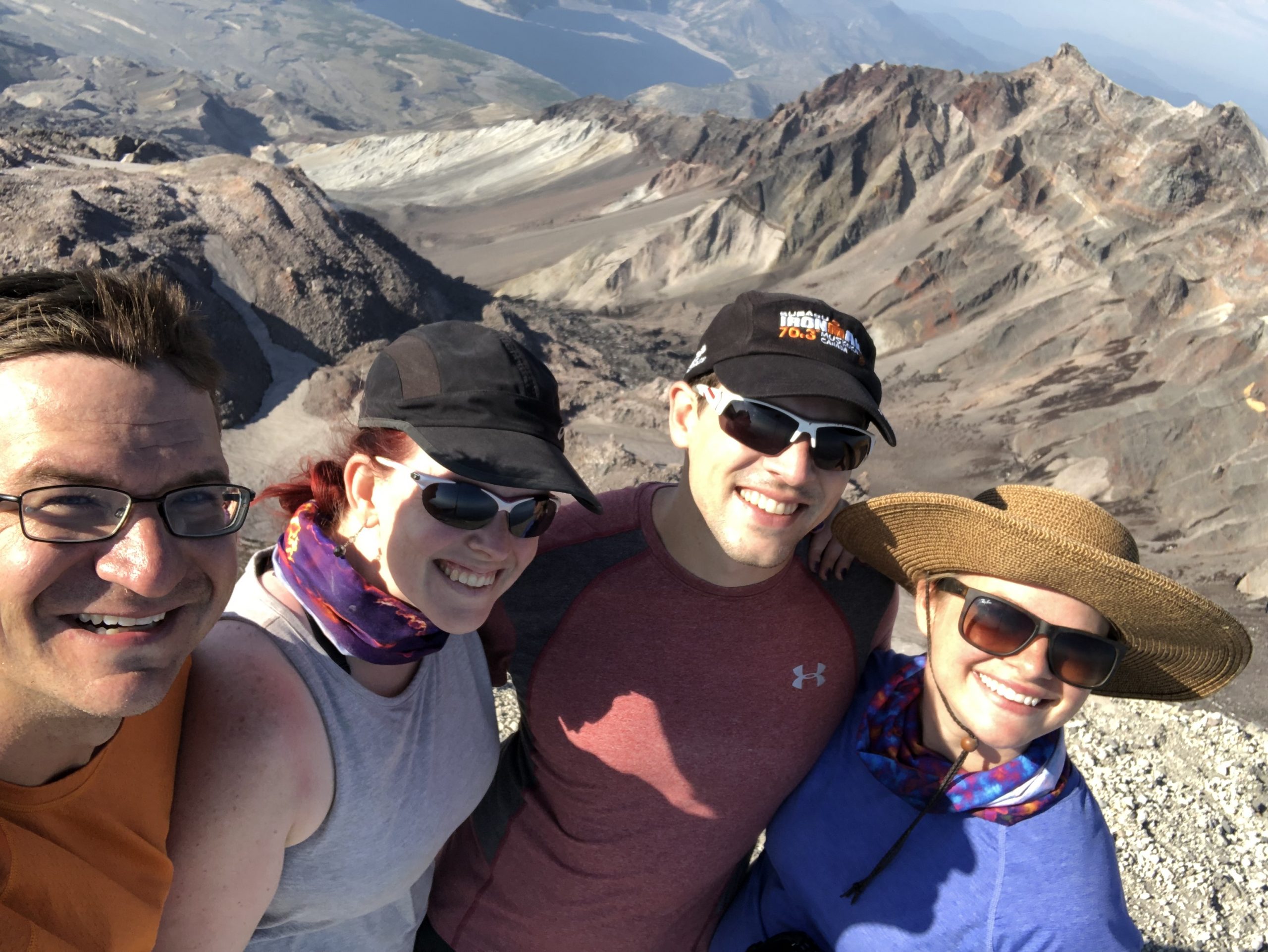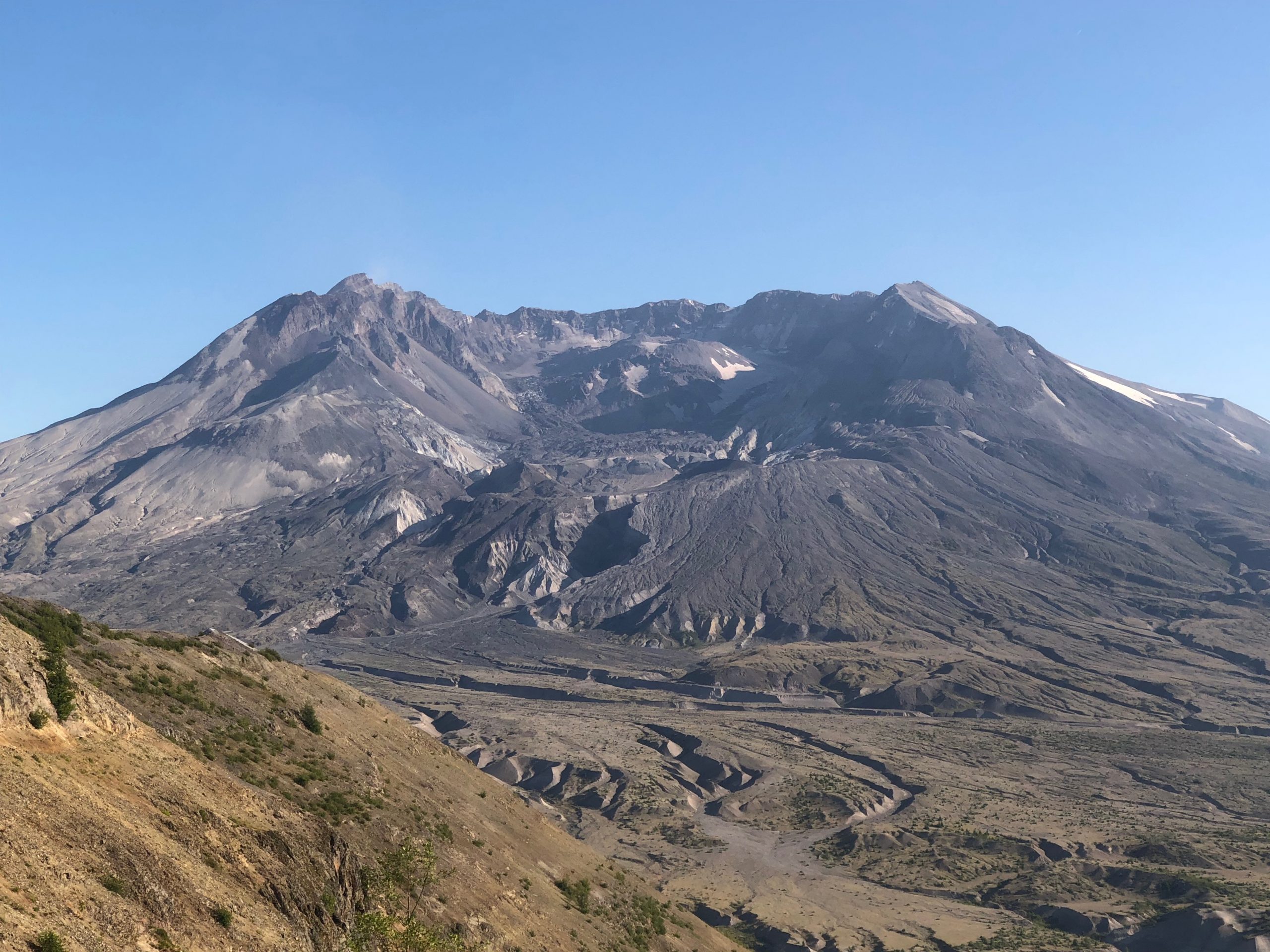Mount St. Helens: Sweet Summit Success!
Monitor Ridge – Part 2
Three steps. Two. One. Suddenly, Mount St. Helens’ summit crater stretched wide open in front of me. The rim of the crater curved around to the north like eagles’ wings. An enormous lava dome that dwarfed everything around it sat perched in the heart of the mile-wide crater. The lava dome itself sat steaming happily away, tendrils of the white steam curling up toward us. The sharp scent of sulfur – like rotten eggs – made my nose sting.
We had made it! I clung to my husband, brother, and sister as we cried victorious tears. Jason, Paul, and Alex had each been overwhelmingly patient and kind to me on that hike. Twenty-four hours before, none of us imagined we’d be standing there together. But there we were! Successful because of each other’s patience, love for each other and for the volcano, and because of God’s grace.

Thursday Thoughts: Mount St. Helens – Johnston Ridge Observatory
Today’s Thursday Thoughts are brought to you directly from the Johnston Ridge Observatory at Mount. St. Helens. The observatory is approximately 5 miles from the volcano, and offers on of the best views of the crater, lava dome, and 1980 blast zone. This video shows our view from the ridge, and explains some of the features you can see from the overlook. Happy Hopping!
Capulin: The Summit

VITAL STATS
Name: Capulin
Type: Cinder Cone
Eruption Status: Extinct
Last Eruption: Approximately 60,000 years ago
Location: 36.7811° N, 103.9695° W
Northeastern New Mexico; Raton-Clayton Volcanic Field
The clouds that enshrouded Capulin’s cone finally began to break around mid-morning. We raced to the summit to see what had been hidden behind the thick mist all morning. What we found was breathtaking.
Capulin’s summit crater is perched over 1,300 feet above the surrounding plains, and the drive to reach it is nothing short of intimidating. If you’re not driving, take a peek out the passenger side window. There are no guardrails and the view is straight down. This cone has virtually no slope. Not intimidating…not at all…
Capulin Volcano

Vital Stats
Name: Capulin
Type: Cinder Cone
Eruption Status: Extinct
Last Eruption: Approximately 60,000 years ago
Location: 36.7811° N, 103.9695° W
Northeastern New Mexico; Raton-Clayton Volcanic Field
The drive east through Northern New Mexico can be a pretty boring one. The landscape is flat and brown, minus a few hills popping up here and there. Major yawn factor – until you see the unmistakable cone of a volcano standing majestically next to the highway. And then you realize exactly what you’re driving through.
The Raton-Clayton Volcanic Field stretches from southern Colorado to the western border of Oklahoma and Texas, near the town of Clayton, NM. This volcanic field is a bit of an anomoly in the volcano world. Most volcanoes form on hot spots (like Hawaii) or along plate boundaries (Cascade Range). New Mexico doesn’t sit on either one. However, a continental rift does run though the area where the land is pulling apart and much thinner than the surrounding crust. This is what allowed magma to rise to the surface, creating some spectacular volcanic activity.



